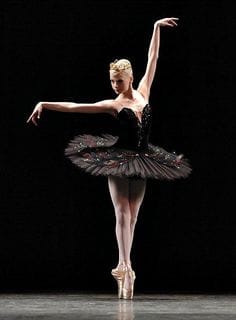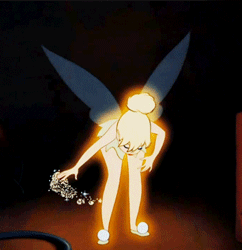SWAN LAKE MAGIC Anne Maria Clarke @ the Ballet
We are separated from the divine – the transcendental - the bridge, so the ancients said, which we may build over this abyss of separation is constructed by our passionate longing for the greater and by the passionate longing of the greater for in us – this is the fundamental reason, the fundamental background for all the great love stories – all the great lyrical Romeo and Juliet type myths of the world. That there are two, ourselves and the ineffable greatness from which we have come – who are longing for each other with a desperate, painful, suffering passion. And we have within us that vestige of memory – of what it was – what it felt like – what it can be.
Stephen Hollier: The Creative Imagination

Thereafter it seemed that Swan Lake defined the Bolshoi – becoming its great signature piece and in time it has almost come to define the genre of classical ballet itself. It is certainly the most well known and perhaps the most well loved. Who then can now unpick the parts and is it even useful to do so? Far better it seems to accept their inseparability - the alchemy of their union.
When a particular retelling of a story grips the collective imagination – when it can stand to be endlessly told and retold – we can be sure it touches upon something profound. Swan Lake might have had its stars over the years, prima ballerina's like Anna Pavlova – and legendary pairings like Margot Fonteyn and Rudolf Nureyev who have inhabited the story, and perhaps even claimed it for a while – yet Swan Lake the myth is bigger than any flesh and blood star that pirouettes across its worldly stage – bigger than any inspired choreographer – any ballet company - even the Bolshoi.
The Prologue

Act One - the Grand Hall
Act two - the lovers meet

He takes aim with his bow but as he does so she alights at the waters edge and magically transforms into the most beautiful girl he has ever seen. Amazed, he steps forward to greet her and at first she is startled but he gently reassures her and begs her tell him of the marvel he has just witnessed. Odette then tells him of her royal origins and of the terrible spell that entraps her unless she can find a suiter whereupon Siegfried pledges his undying alliegence and implores her to attend the great ball where he is to choose a wife next day. Odette promises to find a way to escape her tower and together they dance falling more and more in love with every passing moment.
And so the theft, the wicked illusion is concocted - and very soon - for the dark magic is strong - it is as if the socerer's daughter is hersef the beautiful princess - and the only reason we the audience will know who is who - for the two parts are very often played by the same dancer - is that Odile - when next we encounter her will be completely robed in black.
And so the curtain falls - the house lights return and exhausted yet full of anticipation as to what may now occur we withdraw to the theatre foyer to briefly collect our wits.
Act three - the arrival of the Black Swan

Everyone stops in their tracks to admire Odile for she is truely magnificent. Seifired bows down low to greet her and together they take to the floor.
Oblivious of the deception he is utterly enthralled and before he can check himself and come to his senses - he promises his undying love to the dark imposter and announces his intention to marry her to the enitire court.
Such is the nature of the imposter here. Her dance is sassy and powerfully accomplished – incorporating as it does the impressive 30 turn finale – a feat for any ballerina - and what man could resist - but then the Prince looks into her eyes and then suddenly he knows – what we already know - a coldness strikes his heart – but it is much, much too late.
The music swells and swells again - and we too are held captive.
Odile dances on without care or kind thought, overshadowing all.
She is utterly triumphant.
The lights dim – the scene is at an end – save for the silouette at the window of a weeping Odette who has somehow escaped her tower in order to warn of the deception.
Fairytales, myths and legends do not just concern ' the light' but very much the darker aspects of the self - the shadow and the struggles one has with it and we are not always led to the condition of happily ever after - although in a full rendition of a tale in this genre - the promise or hope of redemption is never completely dashed.
And so it is with Swan Lake.
But first - there are dark forces to contend with - for our storybook characters - yet sometimes also for the dancers themselves, the choreographers and those involved in such productions. There is something so powerful about Swan Lake you see - that even in it's re-enactment - one may become caught up so to speak - or even overshadowed by the archetypes at play in a way which can mirror the themes within the story.
For the prima ballerina - who must often play both white and black swan - the idea that they are really one and the same struggling for ascendency within the self is at the root of the tale and brilliantly portrayed in the 2010 film Black Swan - where the story, the myth, the fairtytale darkly bleeds through into the everyday taking hold of those who seek to tell it.

Clarissa Pinkola Estes, in her classic book Women who Run with the Wolves elucidates and develops these themes in her own dramatic re-telling of the Red Shoes and in so doing hints at the nature of the powerful archetypes at play.
At the dark end of the spectrum of passion there is a kind of madness - where desire overtakes or is indeed overtaken by the drive for that which is sought or what itself seeks to be expressed. Here the road to psychosis lies - where one becomes over-identified with the archetype and can no longer step back - like the girl in the Red Shoes - who at first just longs for the pretty new things – but soon her longing mutates into an addition, as Estes makes clear – then the girl is no longer just dancing but is rather being danced in an incredibly heartless and inhuman way that if not checked by some miraculous intervention - will lead without doubt to her death.
The problem illuminated here - the trap if you like – of which we may all fall victim - is greatly exacerbated by this over -identification - the temptation to claim the genius as one's own - as part of one's worldly self. Then we may become inflated. The ancient Greeks called it hubris and it is a dangerous affliction indeed - for then instead of ecstasy - there is agony - instead of transcendence - there is psychic collapse and instead of becoming one of God's Athletes - as the ballet dancer first innocently dreams - she is danced to death by the devil.
Humility is the safe guard in such matters of course as is the ritualistic necessity of stepping down and out of role - of grounding oneself and returning to the everyday. The house lights need to come on so to speak - for dancers and audiences alike - for the magic spell must be intermittently broken lest we forget ourselves in the worldly realm.
Act Four - The Lakeside

As dawn approaches, von Rothbart appears. The lovers respond to his threat by throwing themselves into the lake. At last Von Rothbart is vanquished and his power ended.
The Apotheosis - the lovers are reunited in death
Those who know, that what they and all things really are - is the Everlasting - dwell in the groves of the wish fulfilling trees, drink the brew of immortality, and listen everywhere to the unheard music of eternal concord.

She has never looked back – nor attended a single performance since and has had a whole new career or incarnation if you like as an aqupuncturist far away from the bright lights.
Through her I have come to understand much about this very particular art that I could never otherwise have known. She has taken me behind the scenes as it were and allowed me to see some of the pain and sometimes some of the heartlessness that can reside there – but one day – thankfully – in her mid twenties something inside her decided to shatter the enchantment, the spell of that which held her and in so doing she experienced her own kind of apotheosis - the death of what was – the indentured self if you like – and the rebirth of someone entirely new and entirely free.
Yet though she said her goodbyes, hung up her blood stained dancing shoes and placed her feet fully and comfortably on the earth – she will never forget the peaks – the highs – the soaring practically out of this world - that maybe – in ballet at least – cannot be attained in any other way.
The artist takes a risk – like the shaman - she must come close to the edge one might say – of what may be reasonably endured – physically – emotionally – mentally and spiritually. YET - if one is to touch what is sublime – one must allow oneself to be touched by the associated archetypes and all the dangers and perils inherent in doing so. In order to live more fully – in order to glimpse what maybe once the mystics glimpsed – the cost is high - but not to understand why these things might happen or why they might seem justified - like the only thing to do – is to profoundly misunderstand our collective yearning for that which transcends the seeming blandness and even futility of life lived too safely.
Through the power of its core myth, the genius of Tchaikovsky's music and the sheer beauty of the ballet and it's dancers we are vicariously transported, swept away in the moment – in utter suspension of disbelief - to a place within ourselves where we too experience the apotheosis that redeems the tragic tale and we too are lifted up and out of the illusion of our third dimensional everyday existence to glimpse – to touch – to feel - the promise of the beyond.
I must admit to being personally taken aback by my own responses to the production I attended recently by the Russian State Ballet – tears - uncontrollable tears streamed unbidden down my face during the finale and continued even after the curtain came down and the house lights came on.
Thank God for the theatre!
And thank God for all those brave souls who tread its boards!
Bravo! Bravo! Bravo!
Anne Maria Clarke
x x x
Joseph Campbell – The Hero with a Thousand Faces
Clarissa Pinkola Estes – Women who run with the Wolves
Subscribe to Anne Maria Clarke's YouTube channel
http://www.youtube.com/c/annemariaclarke
More fairy-stories, myths & legends by
Anne Maria Clarke
http://www.archivepublishing.co.uk
www.annemariaclarke.net














